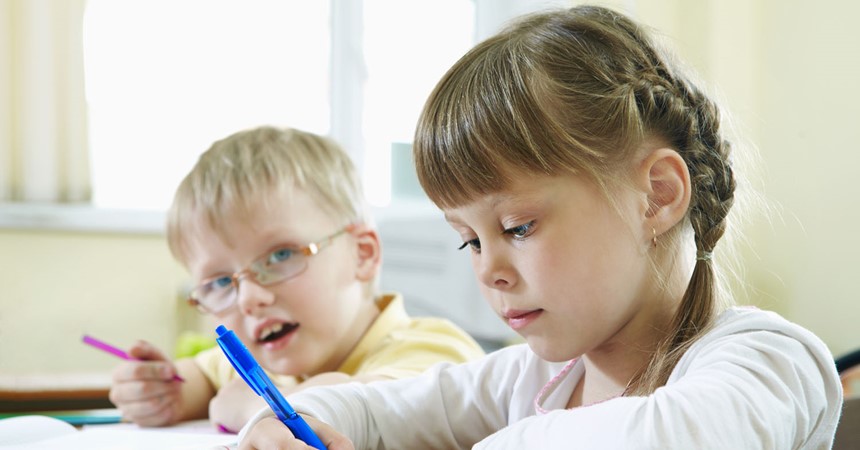Under the Disability Discrimination Act, schools are required to make reasonable adjustments to allow all students with a disability to participate in education on the same basis as other students.
Ensuring that classrooms and the wider school environment are ‘communication friendly’ provides opportunities for all students to effectively and easily communicate with peers and teachers; effectively engage with the curriculum and support the social, emotional and well-being needs of all students.
For teachers and schools facing this complex challenge, it is important to look at language learning environments, learning interactions, and learning opportunities.
Language learning environments refer to the physical setting and learning context of the classroom, playground and wider school environment. Some questions that can be asked to create improvement in this area include:
- Are learning areas and resources clearly identified, labelled and accessible?
- Have EAL/D needs of students been considered?
- How are transitions between activities planned and delivered?
- How are the wider spaces for outdoor play, role-play and peer interactions designed and accessed?
- Are all teaching staff aware and trained in the use of resources, areas, and strategies including visual supports when outside of the immediate classroom setting?
By having consistent routines and support, students know what is expected of them which helps to maximise engagement and learning. To have this consistency, it is also important to consider how to generalise and support the use of any strategies by parents at home.
Parent Information Sessions typically held at the start of each school year are a wonderful opportunity to show how visual supports such as timetables and signs and symbols will be used in the classroom and how these can be adapted for home use.
Other strategies such as providing adequate space, light and temperature, eliminating background noises/distractions and having a clutter-free layout can give parents and carers food for thought when designing areas at home for students to study and complete homework.
Language learning interactions refer to how adults (teaching and other staff and parents/carers) interact with children. Many simple strategies are effective in providing communication friendly environments including:
- Gaining a student’s attention by stating their name prior to delivering instruction or asking a question
- Use of natural gesture, props, signs and symbols to reinforce language
- Adequate rate of speech
- Modelling of the desired language and/or behaviours
- Commenting and expanding on a student’s own words and language
- Using a range of multi-modal cues
- Considering and adjusting the vocabulary, length and complexity of instructions
- Provision of scaffolds
- Use of open end questioning to promote students thinking and conversations.
All attempts of communication including verbal, non-verbal, visual or written, as well as the use of checklists, prompt cards and asking for clarification, should be encouraged and praised to help build a student’s independence and learning.
Language learning opportunities refers to the structured opportunities available every day to support a student’s language development. Although speech and language are inherent in almost all activities within a school day, it’s crucial that all these opportunities are specifically planned, delivered and flexible to promote a communication friendly environment across differing contexts. Some options may include:
- Facilitating small group work and interactions/conversations
- Providing adequate space, layout, and support for ‘think- pair-share’ activities so that students have opportunities for structured conversations
- Whole class activities on the floor allowing all students to see and interact with the teacher, board and other students. A wide circle formation can assist in promoting participation of all students rather than a traditional cluster of children seated behind each other.
To find out more about supporting friendly communication in your classroom, click here.
